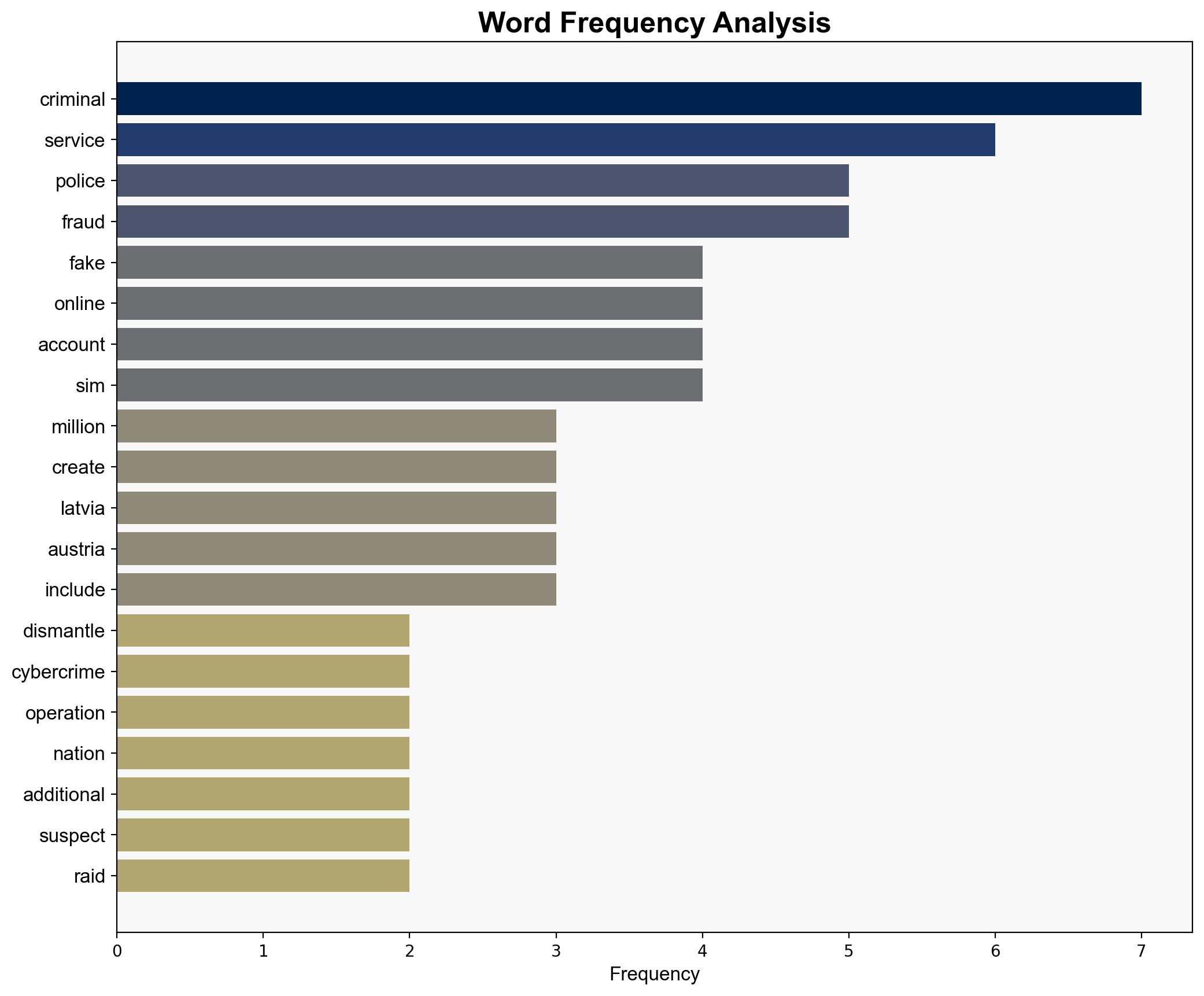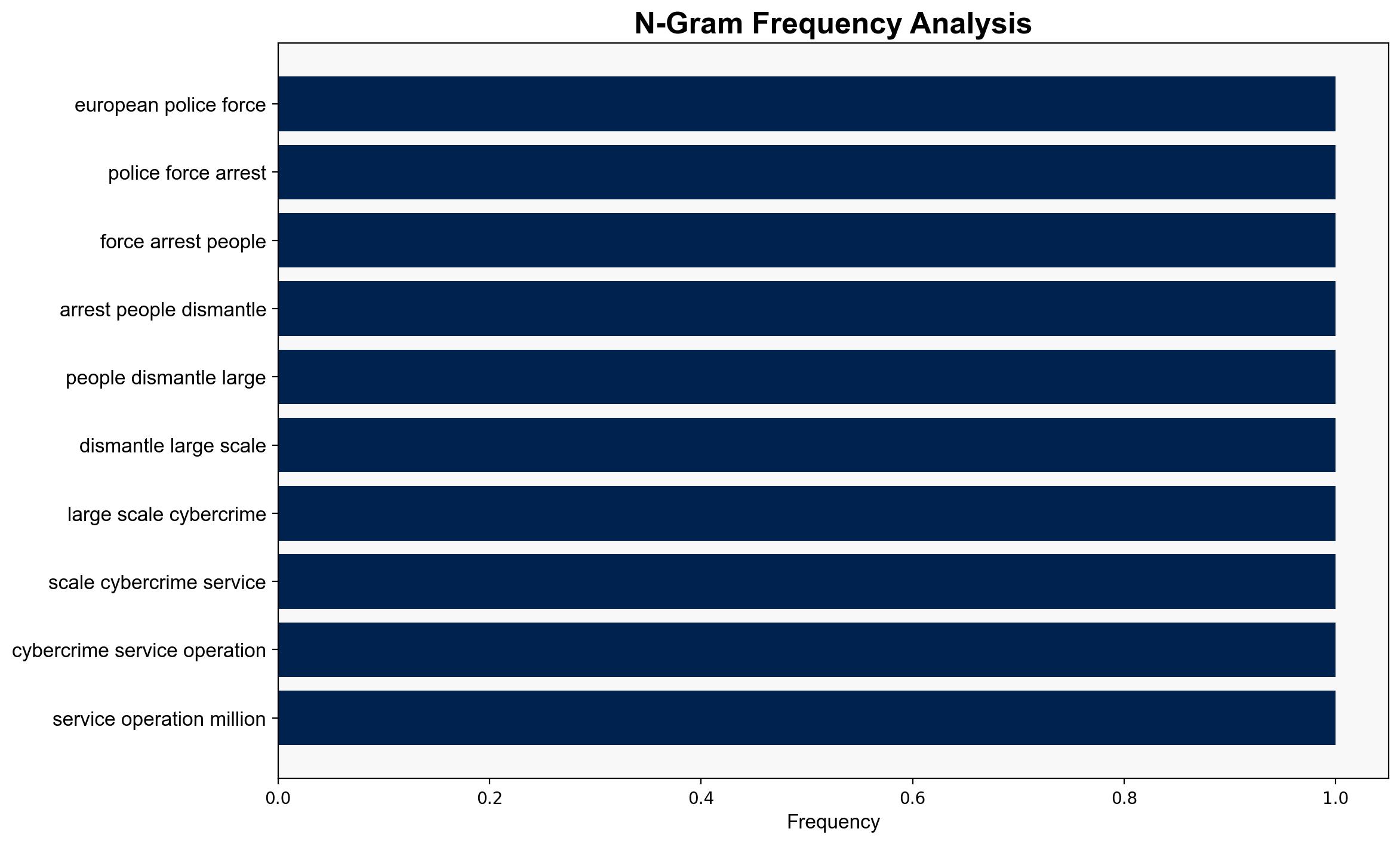Euro cops take down cybercrime network with 49 million fake accounts – iTnews
Published on: 2025-10-21
Intelligence Report: Euro cops take down cybercrime network with 49 million fake accounts – iTnews
1. BLUF (Bottom Line Up Front)
The dismantling of a cybercrime network responsible for creating 49 million fake accounts highlights significant vulnerabilities in online platforms. The most supported hypothesis is that the network primarily aimed to facilitate widespread fraud and identity masking for various criminal activities. Confidence level: High. Recommended action: Enhance international cooperation and cybersecurity measures to prevent similar operations.
2. Competing Hypotheses
1. **Hypothesis A**: The primary objective of the cybercrime network was to facilitate large-scale financial fraud and identity theft through fake accounts and bypassing authentication systems.
2. **Hypothesis B**: The network was primarily a tool for nation-state actors to conduct espionage and destabilize targeted regions by exploiting fake accounts for misinformation and influence operations.
Using ACH 2.0, Hypothesis A is better supported due to the evidence of direct financial losses, the variety of fraud tactics employed, and the involvement of Europol and Eurojust in financial crime attribution. Hypothesis B lacks direct evidence linking the network to nation-state objectives.
3. Key Assumptions and Red Flags
– **Assumptions**: The network’s primary goal was financial gain rather than geopolitical influence. Law enforcement has accurately attributed the network’s activities to criminal rather than state actors.
– **Red Flags**: Potential underestimation of nation-state involvement. Lack of detailed information on the network’s leadership and decision-making processes.
– **Blind Spots**: The full extent of the network’s reach and its potential connections to other criminal or state-sponsored operations remain unclear.
4. Implications and Strategic Risks
The takedown reveals systemic vulnerabilities in digital authentication and identity verification processes. The operation’s success may lead to a temporary reduction in similar crimes but could drive remaining networks to adopt more sophisticated methods. There is a risk of retaliatory cyber activities or the emergence of new networks filling the void. Economically, continued fraud could undermine trust in digital platforms, affecting e-commerce and online communication.
5. Recommendations and Outlook
- Strengthen international cybersecurity frameworks and information-sharing protocols to preemptively identify and dismantle similar networks.
- Invest in advanced authentication technologies and public awareness campaigns to reduce susceptibility to fraud.
- Scenario Projections:
- **Best Case**: Enhanced security measures and international cooperation lead to a significant reduction in cybercrime.
- **Worst Case**: Emergence of more sophisticated networks exploiting new vulnerabilities, potentially involving state actors.
- **Most Likely**: Gradual improvement in cybersecurity with intermittent disruptions from evolving cybercrime tactics.
6. Key Individuals and Entities
No specific individuals are named in the source. Entities involved include Europol, Eurojust, and the Shadowserver Foundation.
7. Thematic Tags
national security threats, cybersecurity, counter-terrorism, regional focus




